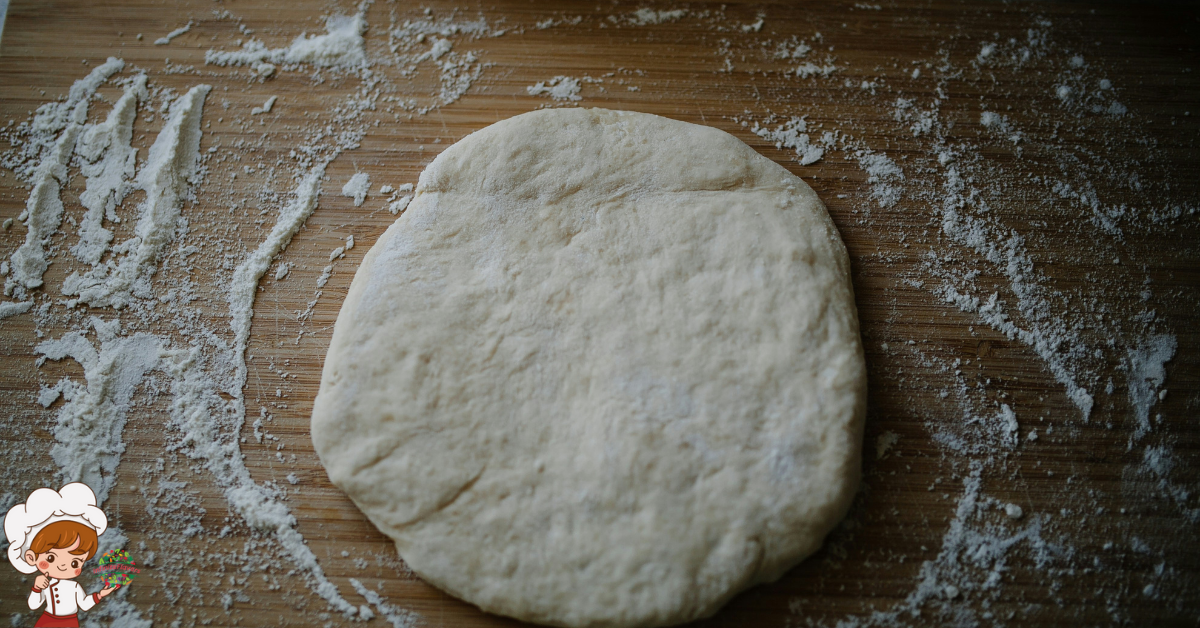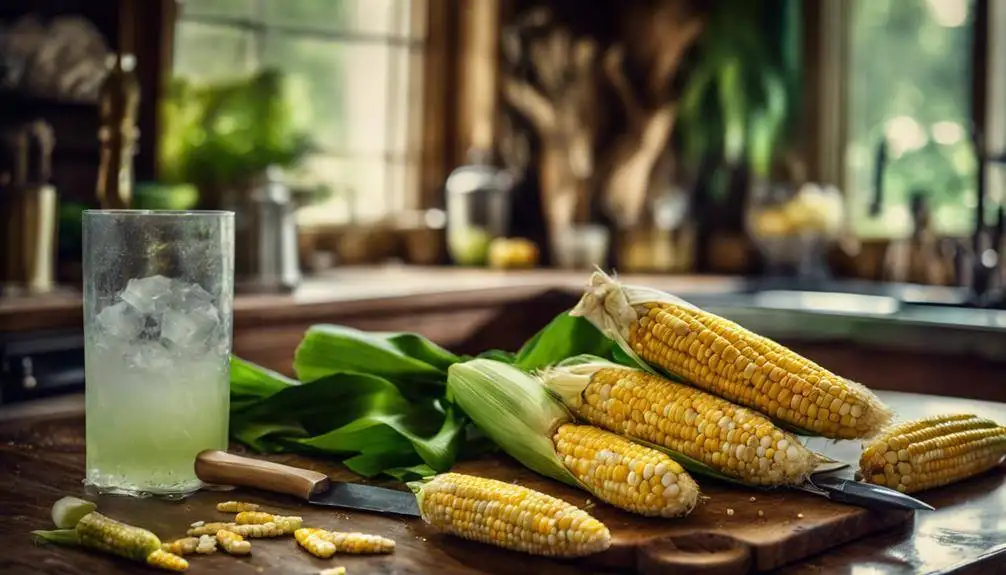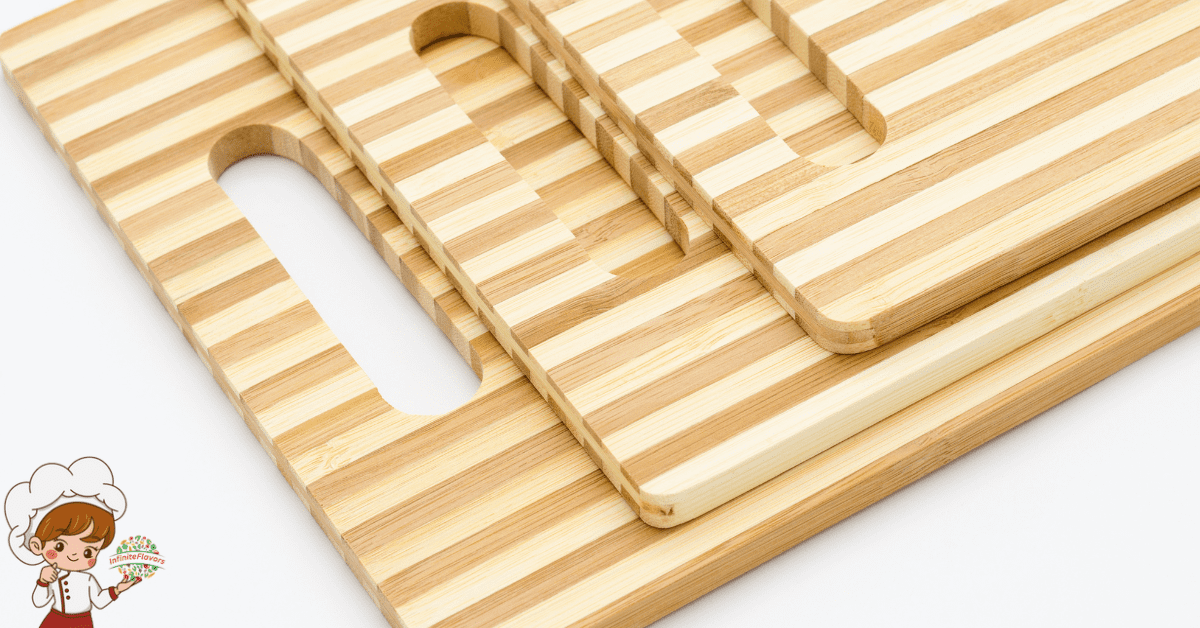Cutting-Edge Technology For Food Safety

Cutting-Edge Technology For Food Safety; Cutting-edge technology is transforming food safety in exciting ways. You’ll benefit from innovations like blockchain for tracking food from farm to table, ensuring transparency and trust. IoT sensors monitor freshness, alerting you to any temperature changes that could spoil your food. AI enhances inspections by identifying hazards in real time, while smart packaging displays freshness indicators and antimicrobial properties. Rapid pathogen detection tools provide immediate safety feedback. Drones monitor crops, and mobile apps keep you informed about food recalls. With these advancements, you can enjoy safer meals and peace of mind, and there’s much more to explore!
Blockchain in Food Tracking
In today’s food supply chain, transparency is essential, and blockchain technology is stepping up to the plate. By leveraging blockchain, you can enhance supply chain transparency like never before. This technology allows you to track every step of a food product’s journey, from farm to table. Each transaction and movement is recorded in an immutable ledger, making it easy for you to access real-time data about the origin, processing, and distribution of food items.
When you know where your food comes from, you build consumer trust. With blockchain, you can provide customers with reliable information about the safety and quality of their food. Imagine scanning a QR code on a product and instantly accessing details about its journey—where it was grown, who processed it, and how it was transported. This level of transparency assures consumers that they’re making informed choices about what they eat.
Moreover, in the event of a food safety issue, blockchain can help pinpoint the source of contamination quickly. You can minimize the impact of recalls, reducing waste and safeguarding your reputation. As consumers become more knowledgeable and concerned about food safety, adopting blockchain technology can set you apart from competitors. By prioritizing supply chain transparency, you not only enhance consumer trust but also contribute to a safer and more accountable food system. Embrace blockchain, and watch your brand’s credibility grow as you provide clarity in a complex food landscape.
IoT Sensors for Freshness
Freshness is a critical factor in food safety, and IoT sensors are revolutionizing how you monitor it. These innovative devices act as freshness indicators, providing real-time data on the quality of food products throughout the supply chain. By integrating sensor calibration, you can guarantee that the data collected is accurate and reliable, facilitating effective quality assessment.
With IoT sensors, you can greatly extend the shelf life of perishable goods. They monitor environmental conditions such as temperature and humidity, enabling timely interventions when necessary. This level of environmental monitoring helps prevent spoilage and waste, ultimately benefiting both businesses and consumers.
Moreover, smart logistics powered by IoT technology makes it easier to track products from farm to table. The integration of these sensors into the supply chain allows you to gather critical information for freshness forecasting, guaranteeing that food products reach consumers at their peak quality.
Data security is also a key consideration when utilizing these sensors. You’ll want to protect sensitive information while still promoting consumer awareness about the freshness of the products they purchase. Transparent communication about the technology used can enhance trust and confidence in your brand.
Incorporating IoT sensors for freshness not only improves food safety but also aligns with modern consumer expectations for quality and transparency. By leveraging these technologies, you can create a more efficient and reliable food supply chain, guaranteeing that fresh food is always available to those who need it.
AI in Food Inspection
AI in food inspection can revolutionize how you guarantee safety and quality. With enhanced detection algorithms, real-time monitoring systems, and predictive analytics applications, you’ll catch potential issues before they escalate. These technologies not only improve efficiency but also help maintain consumer trust in your products.
Enhanced Detection Algorithms
Thanks to recent advancements in technology, enhanced detection algorithms are revolutionizing food inspection processes. These algorithms utilize machine learning to improve accuracy in identifying potential food safety hazards. By employing anomaly detection techniques, they can spot irregularities in data that might indicate contamination or spoilage.
Through sensor fusion, multiple data sources are combined for a thorough view of food quality. You’ll see how data visualization tools present this information clearly, making it easier for inspectors to understand and act on findings. Automated reporting further streamlines the process, guaranteeing that any risks are documented efficiently.
Statistical analysis plays a vital role in risk assessment, allowing you to quantify potential threats based on historical data. As you engage with these technologies, you’ll notice the importance of algorithm optimization in maintaining accuracy and speed. Pattern recognition capabilities help in identifying trends that could lead to food safety issues, while predictive modeling allows for proactive measures rather than reactive responses.
Incorporating these enhanced detection algorithms into food safety protocols not only boosts efficiency but also enhances the overall safety of the food supply chain. You’re witnessing a significant leap forward in how we secure food safety every day.
Real-Time Monitoring Systems
Real-time monitoring systems have stepped up the game in food inspection, leveraging artificial intelligence to provide immediate insights into food safety. By utilizing sensor integration, these systems continuously gather data from various points in the supply chain. With cloud connectivity, you can access this information anytime, anywhere, allowing for effective data visualization that enhances decision-making.
The user interface is designed for ease of use, enabling quick navigation through critical performance metrics. You can effortlessly manage alerts, ensuring that any deviations from safety standards are addressed promptly. Compliance tracking becomes a breeze, keeping you aligned with regulations while fostering stakeholder engagement through transparent reporting.
One of the most significant advantages is system scalability. As your operations grow, the monitoring system can adapt, maintaining cost efficiency without compromising safety. With real-time insights and proactive alert management, you can mitigate risks before they escalate. This not only protects consumers but also enhances your brand’s reputation in the market. Embracing these advanced systems means you’re taking a significant step forward in safeguarding food safety and ensuring operational excellence.
Predictive Analytics Applications
Harnessing predictive analytics in food inspection transforms how businesses anticipate and address potential safety issues. By utilizing predictive modeling, you can enhance risk assessments, allowing you to identify potential hazards before they escalate. Trend forecasting helps you understand consumer behavior, enabling you to adjust your strategies accordingly.
Through effective data integration, you can consolidate historical analysis from various sources, improving your overall food safety protocols. This holistic approach aids in anomaly detection, as you’ll be better equipped to spot irregularities in your supply chain. By recognizing these patterns early, you bolster your quality assurance efforts, ensuring that products meet safety standards.
Moreover, leveraging predictive analytics supports your commitment to regulatory compliance. It allows you to stay ahead of evolving regulations by providing insights into best practices and potential violations. In a world where food safety is paramount, using these advanced techniques not only safeguards your products but also builds consumer trust.
Smart Packaging Innovations
In today’s fast-paced world, smart packaging innovations are transforming how we guarantee food safety. You might not realize it, but every time you pick up a food product, you’re interacting with advanced technology designed to keep your food safe and fresh. Smart labels and intelligent materials play an essential role in this transformation, providing real-time information about the product’s condition.
For instance, dynamic indicators can signal changes in temperature or spoilage, letting you know if the food is still safe to consume. With freshness indicators, you won’t have to guess; you’ll see clear visual cues that tell you when it’s time to eat or toss. These interactive designs not only enhance consumer engagement but also empower you with knowledge about your food.
Moreover, sustainable packaging options are becoming more available, ensuring that your choices are environmentally friendly. Antimicrobial coatings help prevent contamination, further increasing food safety. And if you’re concerned about waste, you’ll be glad to know that biodegradable options are on the rise, making it easier for you to make responsible choices.
Lastly, sensory technology is paving the way for packaging that reacts to the environment, providing you with the ultimate assurance that your food is safe. With these innovations, you’re not just buying food; you’re investing in a safer future. Embrace the convenience and safety that smart packaging brings to your kitchen and enjoy peace of mind with every meal.
Rapid Pathogen Detection
Smart packaging innovations set the stage for the next big leap in food safety: rapid pathogen detection. With advancements in molecular diagnostics and biosensor technology, you can now identify harmful pathogens in real-time, enhancing food safety considerably. Rapid testing methods utilize genetic sequencing to profile various pathogens, allowing you to pinpoint contamination sources more effectively.
Imagine having a lab on a chip that fits in your pocket, enabling mobile detection of pathogens right at the source. This technology streamlines field testing, making it easy to conduct surface sampling in restaurants, food processing plants, or even at home. You’ll know almost instantly if your food is safe to consume or needs to be discarded.
The integration of rapid pathogen detection into smart packaging means you won’t have to wait days for lab results. Instead, you’ll receive immediate feedback, allowing you to make informed decisions about your food. Whether you’re a consumer or a food industry professional, this technology empowers you to act quickly in response to potential threats.
Temperature Monitoring Solutions
With the rise of temperature monitoring solutions, ensuring food safety has never been more straightforward. You can easily utilize wireless sensors that track temperature changes in real-time, sending automated alerts if conditions deviate from established calibration standards. This proactive approach allows you to address potential issues before they become serious problems.
Mobile monitoring apps give you remote access to your temperature data, enabling you to keep an eye on storage environments from anywhere. You’ll appreciate user interfaces designed for simplicity, making it easy to navigate through various features and settings. Data integration capabilities mean you can seamlessly connect your temperature monitoring system with other food safety technologies, enhancing overall efficiency.
Cloud storage offers another advantage, allowing you to securely store historical data for compliance tracking and audits. You can pull up past records easily, which is essential for meeting regulatory requirements and demonstrating adherence to safety protocols. With the right system, you can effortlessly maintain compliance and keep your operations running smoothly.
Robotics in Food Processing
Robotics is revolutionizing food processing by streamlining operations and enhancing efficiency. With the rise of automated sorting systems, you can expect faster and more accurate categorization of ingredients, reducing waste and improving product quality. Robotic sanitization has become essential in maintaining hygiene standards, ensuring that your processing environment remains clean and compliant.
Precision cutting technologies enable robots to slice and dice ingredients with incredible accuracy, minimizing spoilage and maximizing yield. Intelligent packaging solutions are also on the rise, using robotics to package products efficiently while ensuring freshness and safety. Collaborative robots, or cobots, work alongside human workers, enhancing productivity and allowing for a safer workplace.
Smart conveyors equipped with vision systems help monitor the flow of products, making adjustments in real-time to optimize processing speed and accuracy. This integration of technology allows for seamless operations, reducing the risk of human error. With autonomous delivery systems, you can streamline logistics by transporting goods automatically within your facility, saving time and labor costs.
Robotic harvesting is transforming the agricultural sector, ensuring that crops are picked at the perfect time, which improves quality and reduces waste. Adaptive processing technologies allow for adjustments based on product variations, ensuring consistent quality regardless of input variability. By embracing these advancements in robotics, you’re not just improving efficiency; you’re also enhancing the safety and quality of food products, ultimately benefiting consumers and your bottom line.
Data Analytics for Safety
As food processing becomes increasingly automated, data analytics is stepping in to enhance safety measures across the industry. You can leverage data visualization techniques to present complex safety data in a clear and intuitive way, making it easier for your team to spot potential issues. By employing predictive modeling strategies, you can forecast possible risks and implement preventive measures before they escalate.
Utilizing statistical analysis methods, you can analyze historical data to identify trends and patterns that may indicate safety vulnerabilities. Integrating risk assessment frameworks allows you to systematically evaluate these risks, ensuring you prioritize the most significant areas. Anomaly detection systems play a vital role by flagging unusual patterns in your data, alerting you to potential safety hazards in real-time.
Trend forecasting tools help you stay ahead of consumer behavior analytics, allowing you to adapt your safety protocols based on changing market demands. With data integration solutions, you can consolidate information from various sources, enhancing your overall safety strategy. Machine learning applications can analyze vast amounts of data efficiently, continuously improving your safety measures as new data becomes available.
Moreover, implementing supply chain optimization strategies can help you track the safety of ingredients from farm to table, ensuring compliance throughout the entire process. By harnessing these innovative data analytics techniques, you can not only enhance food safety but also build consumer trust and loyalty in an increasingly competitive market.
Drones for Agricultural Monitoring
Drones are revolutionizing agricultural monitoring by providing real-time insights into crop health and field conditions. With advanced drone technology, you can conduct aerial surveillance that captures high-resolution images and data, making it easier to assess your fields’ health. This precision agriculture approach allows you to monitor crop health more effectively, identifying areas needing attention before issues escalate.
Using remote sensing capabilities, drones collect essential data for field mapping, which helps in visualizing variations in soil and crop conditions across your land. This data collection process enables detailed environmental monitoring, ensuring you’re aware of factors impacting your yield, such as moisture levels and nutrient availability. With the help of these insights, you can make informed decisions that enhance productivity and sustainability.
Moreover, drones facilitate pest detection, enabling you to spot infestations early. Instead of broad-spectrum treatments, you can apply targeted solutions, conserving resources and reducing chemical use. This not only improves your yield assessment but also contributes to healthier crops and the environment.
Mobile Apps for Consumer Safety
Mobile apps are changing the way you stay informed about food safety. With real-time food alerts and barcode scanning features, you can quickly check if the products you buy are safe. These tools empower you to make better choices and protect your health.
Real-Time Food Alerts
In today’s fast-paced world, keeping track of food safety can feel overwhelming, but real-time food alert apps are changing the game. These innovative tools empower you to stay informed about potential foodborne illnesses and safety regulations affecting your meals. By leveraging technology adoption, these apps provide immediate notifications about recalls, contamination risks, and other safety issues within the supply chain.
With enhanced consumer awareness, you can make informed decisions about what to eat and how to protect your family. Real-time alerts facilitate quick incident response, ensuring that you’re always in the loop. Many apps also incorporate risk assessment features, helping you understand the severity of a food safety issue before it impacts your health.
Moreover, these applications foster collaboration among stakeholders, including food producers and regulators, to streamline emergency protocols. They can also serve as valuable resources for training programs, equipping you with knowledge to navigate potential risks effectively. As you embrace these tools, you’ll not only safeguard your health but contribute to a broader culture of food safety, creating a more informed and resilient community. So, don’t wait—download a real-time food alert app today and take control of your food safety journey.
Barcode Scanning Features
Barcode scanning features in food safety apps provide you with an easy way to check the safety of the products you purchase. With just a quick scan, you can access crucial information about a product’s inventory management, ensuring it meets quality assurance standards. These apps enhance consumer transparency by revealing details about the supply chain, so you know where your food comes from.
When you scan a barcode, you can instantly view product labeling, including any recent food recalls or safety audits that might affect your choice. This level of transparency allows you to make informed decisions about what you consume. Additionally, these apps often incorporate traceability systems, which help track a product’s journey from farm to table, ensuring regulatory compliance throughout the process.
Virtual Reality Training
As food safety regulations evolve, virtual reality (VR) training is emerging as a powerful tool to enhance employee education. This innovative approach offers immersive experiences that engage employees in a way traditional methods can’t match. You’ll find that VR training markedly boosts skill retention, allowing you to practice and internalize safety protocols in a safe environment.
With hazard simulations, you can confront real-world scenarios without the associated risks. This scenario-based training enables you to navigate potential hazards in your workplace, enhancing your ability to respond effectively. As you work through these simulations, you’ll also develop a deeper understanding of safety awareness, which is vital in maintaining compliance with food safety standards.
Team collaboration is another key benefit of VR training. You and your colleagues can engage in shared experiences, fostering communication and cooperation as you tackle challenges together. This collaborative aspect can lead to a more cohesive team dynamic in real-world situations.
Moreover, VR training offers virtual assessments that provide immediate feedback on your performance. This instant evaluation helps identify areas for improvement, ensuring you stay on top of your game.
3D Printing for Food Safety
When you think about D printing for food safety, consider how it can revolutionize custom food packaging solutions. This technology allows you to create tailored packaging that enhances freshness and minimizes contamination risks. Plus, innovative ingredient tracking systems can seamlessly integrate with these solutions, ensuring food safety from production to consumption.
Custom Food Packaging Solutions
Custom food packaging solutions, particularly through 3D printing technology, are revolutionizing food safety practices. You can now create packaging that not only meets regulatory compliance but also enhances design aesthetics. This technology allows you to use sustainable materials, which helps in waste reduction and aligns with market trends favoring eco-friendly options.
Personalized packaging is becoming increasingly important, as consumers seek products that reflect their values and preferences. By implementing branding strategies with 3D printing, you can create unique, eye-catching designs that stand out on shelves. Additionally, packaging durability is enhanced, ensuring that food remains safe during transportation and storage.
Consumer education plays a crucial role in leveraging these custom solutions. By providing clear information on your packaging, you can inform customers about the benefits of your sustainable choices and how they contribute to food safety. Moreover, effective supply chain integration allows you to streamline your operations, making it easier to adapt to changing market demands.
Incorporating these innovative approaches not only boosts your brand’s reputation but also fosters greater consumer trust in the safety of your food products.
Innovative Ingredient Tracking Systems
The advancements in 3D printing technology not only transform packaging but also pave the way for innovative ingredient tracking systems that enhance food safety. By integrating traceability technologies, you can monitor ingredient sourcing from farm to table, ensuring supply chain transparency. This level of oversight helps you maintain quality assurance and adhere to regulatory compliance.
With these tracking systems, data integration becomes seamless, allowing you to analyze information from various suppliers. Regular supplier audits can be conducted more efficiently, improving risk management practices. This means you can quickly identify potential issues and take corrective actions before they escalate.
Moreover, as consumer awareness around food safety grows, having robust tracking systems in place not only boosts your credibility but also fosters trust. You’ll be able to provide consumers with detailed information about product origins, enhancing their confidence in your brand.
Cutting-Edge Technology For Food Safety; Frequently Asked Questions
How Do These Technologies Impact Food Pricing for Consumers?
These technologies influence food pricing by enabling dynamic pricing strategies. As you perceive these changes, your understanding of value shifts, potentially affecting your purchasing decisions and overall satisfaction with food quality and affordability in the market.
Are There Privacy Concerns With Food Tracking Systems?
You might worry about privacy concerns with food tracking systems. Ensuring data security is essential for consumer trust, and adhering to privacy regulations while maintaining tracking transparency can help alleviate these concerns and protect your information.
What Are the Environmental Impacts of These Technologies?
You’ll notice that these technologies can enhance sustainability practices, reduce energy consumption, and minimize waste. Effective resource management helps lower carbon footprints, fostering ecosystem balance while promoting environmentally friendly solutions in various industries.
How Are Small Businesses Adapting to These Innovations?
You’ll find small businesses embracing smart packaging and data analytics to streamline their supply chains. They’re also investing in employee training to guarantee everyone understands these innovations, helping them thrive in a competitive market.
What Regulatory Challenges Do These Technologies Face?
You’ll find that regulatory compliance poses significant challenges, as safety standards often lag behind innovations. Adapting to these evolving regulations can be tough, but staying informed and proactive helps you navigate the complexities effectively.
Conclusion
Incorporating cutting-edge technology into food safety isn’t just an option; it’s essential for a healthier future. By leveraging blockchain, IoT sensors, AI, and more, you can guarantee the food you consume is fresh and safe. Embracing these innovations not only enhances your confidence in food quality but also supports sustainable practices in agriculture and production. Stay informed and engaged with these advancements, and help drive the change toward a safer food system for everyone.








